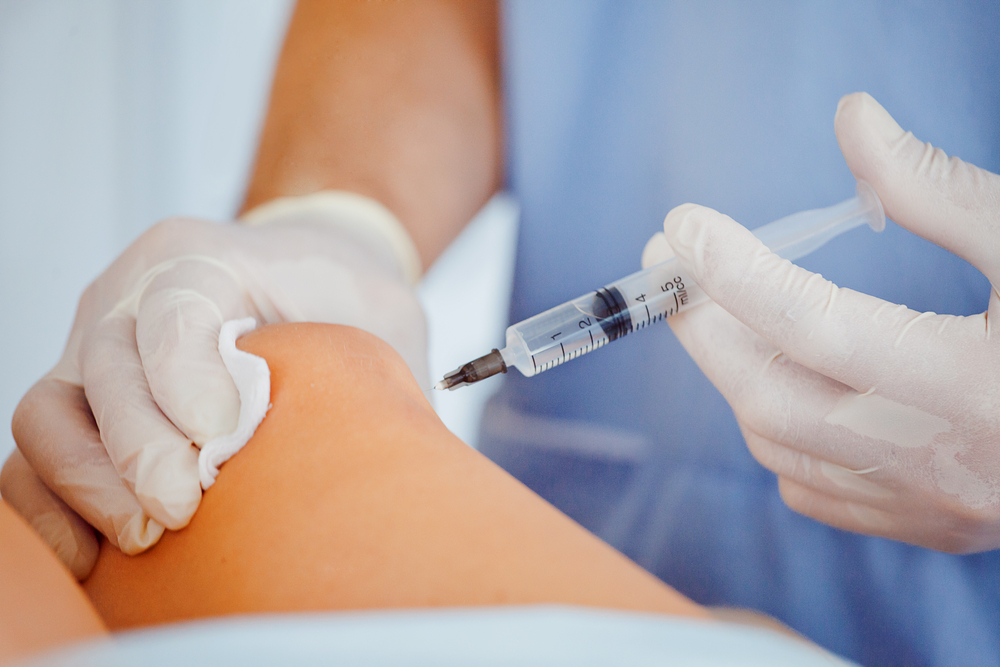Lately in the United States, stem cell therapy is being praised as a wonder cure for everything from spinal repair to wrinkles. But only a few of these applications come with scientific backing. However, there has been some really promising studies done on stem cell therapy for knees.
People develop arthritis when their cartilage lining the joints begins to break down, which leads to pain and limited function. Osteoarthritis is very common today and arthritis is a huge cause of disability in the U.S. Around 600,000 Americans get knee replacements every year, and that number could rise to 3 million by 2030.
In the past, treatment options were either surgical or temporary. Today, stem cell therapy for knees is used to repair cartilage and reduce pain in numerous cases. This enables many people to improve their quality of life without getting a surgery done. With continuing studies, the combinations and forms of stem cell preparations are constantly improving, and results are anticipated to improve as well.
The goal of adult stem cells is to preserve and heal tissues by replacing dying and damaged cells. However, certain areas of the body have a limited blood supply, such as the knees, which prevents the stem cells to work as well as they should.
Stem cell for knees treatment
The normal job of the joint cartilage is to aid in the smooth movement of joint surfaces and shield bones from friction. This shock absorption process allows up to 20 times the weight of the body to be absorbed. Especially in athletes, this is essential to physical movement.
One of the most chronic degenerative disorders is osteoarthritis, it usually affects the knee, prompting decay of its joint cartilage over time. Osteoarthritis can also arise due to a knee injury, such as tendon damage, ligament tear, or a fracture. During the injury, the joint becomes unstable, which starts to wear down the articular cartilage. After this, the bone can sustain damage as well, in addition to the tendons, muscles, synovial joint lining, and ligaments.
Stem cell therapy for knees is minimally invasive. It aims to reduce inflammation, slow and heal all these forms of damage from arthritis, and postpone or prevent knee replacement surgery.
Stem cell knee injections
Fairly simple methods are used to extract adult stem cells from fat or bone marrow. Afterward, it’s concentrated and injected into the knee with special image guidance, very often to successful results.
There was even a study where the patient experienced improvement in both knees even though only one was injected. Even though the process of deterioration continues in the knees, at five years, the knees that received the stem cell injection are in better shape than they were before.
Stem cell therapy for knees is believed to work by:
- stopping the inflammation that can worsen arthritis
- growing into essential cartilage cells
- releasing proteins called cytokines that slow degeneration of cartilage and decrease pain
There is ongoing research being done to figure out which stem cell knee therapy method, dosage, and cell choices provide the most consistent and effective results. Some seem better than others but the overall results are still promising.
Side effects
Stem cell treatment for knees is rarely painful and noninvasive with minimal side effects. The main experiences after treatment include light pain at the injection site, some joint stiffness, and swelling.
Stem cell knee repair cost
Largely dependent on geographical location, the average cost for stem cell therapy treatment for knees is about $3,000 to $5,000 per knee. Currently, the majority of insurance companies don’t yet cover stem cell injections. However, that may change soon as more research is conducted showing the effectiveness of the process.
The procedure is completed in just one visit, but there is also an initial consultation and a follow-up appointment. It takes about two to three hours to perform the injections.
Precautions
Stem cell therapy is relatively safe when performed on the knees. However, it can pose a serious risk when applied to other parts of the body, such as the spine or the eyes. The safest stem cell therapy is one that uses adult stem cells because the cells are harvested from the person’s own body. This minimizes the risk of a bad reaction.
Risks are increased if:
- different types of stem cells are used
- stem cells are taken from the patient but then grown in the lab over time
- stem cells are mixed with other mediums or chemicals
New research is frequently released since this is a new area of treatment. Currently, the only applications approved by the FDA is embryonic stem cells to treat immune or blood system disorders.
Alternative treatments to stem cell therapy
For those who have limited knee mobility or knee pain, alternative treatments include physical therapy, anti-inflammatory medications, or opioid pain medications. Alternative treatments include injections with hyaluronic acid, platelet-rich plasma, or steroids. There are also surgical treatments available, such as subchondral bone drilling, arthroscopy, or microfracture.
Takeaway
The FDA is proceeding with caution regarding stem cell therapy for knees because it’s still very new, but the studies are really promising so far. It has helped many people avoid knee surgery and the side effects are minimal regarding this particular body part.







![Cognitive Enhancers and Smart Pills Gain Popularity among Women [Press Release]](https://lerablog.org/wp-content/plugins/wp-thumbie/timthumb.php?src=http://lerablog.org/wp-content/uploads/2015/04/cognitive-enhancement.jpg&w=300&h=140&zc=1)

I am interested in this procedure secondary to L knee pain and three surgeries. I am 44 years old and do not want a knee replacement. When and where can I receive the injections.